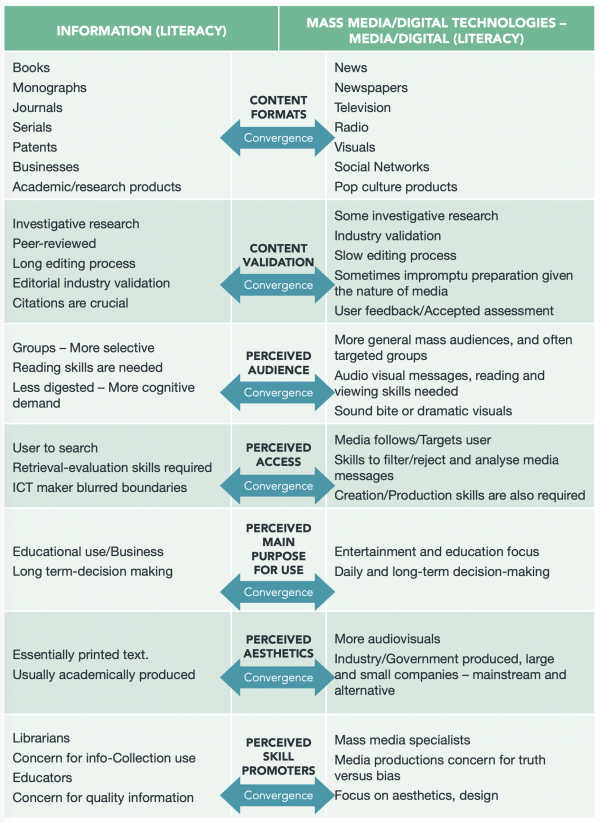Media has been convergence.
UNESCO and experts in different fields, have coined the umbrella concept of media and information literacy bringing together related fields that have the same overall learning objective to empower learners and citizens to develop critical skills in the consumption, use, creation and sharing of content.
Information could be grouped into primary sources, for example research reports, and and tertiary sources taken from primary and secondary sources, such as databases, repositories, and bibliographies.
On one side, MIL addresses textual outputs (either electronic or paper-based publications) that normally undergo peer-review and long editing processes. This is intellectual property from which citations, references and bibliography can be taken.
MIL is also about mass media which considers the subtleties of image, colour, and sound in messages availed by different providers, such as television, social networks, and filmmaking companies. Although institutions do not always live up to normative expectations, the media broadly should exist to inform, educate and entertain.
See below Table (1.1) which illustrates the relation and convergence of content, issues, methods, tools, components of information, media, and technology.





